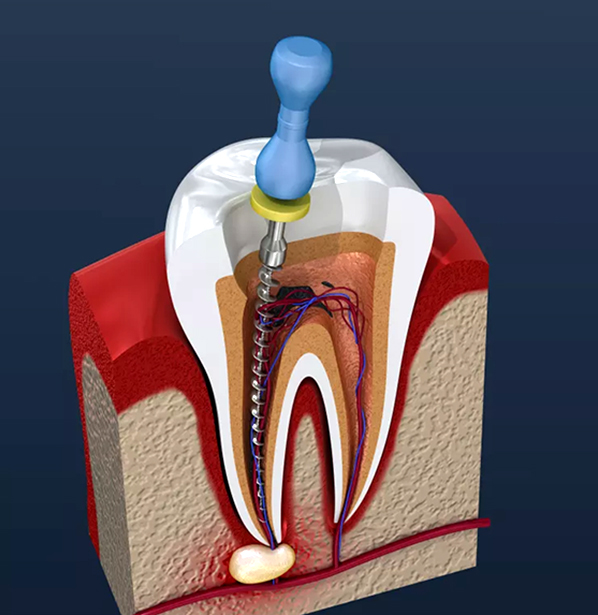1829 56th Ave STE B, Greeley, CO 80634
Root canal Therapy In Greeley, CO

Our teeth consist of dental enamel, dentin, and pulp. Dental enamel forms the outer layer, while dentin is a softer layer beneath it. The pulp, which is a soft tissue, is located beneath the dentin and contains connective tissue, nerves, and blood vessels.
Typically, the pulp is well protected by enamel and dentin. However, if bacteria enter the area through a deep cavity, fracture, or tooth trauma, an infection can occur.
An infected tooth is usually very painful, and if left untreated, the pain will persist and worsen. In such cases, the only option is to remove the tooth, although this is never our first choice.
Missing teeth can cause various oral health problems, such as bone loss and shifting of surrounding teeth. Root canal treatment provides a solution by eliminating the infection, preserving natural teeth, and restoring oral health. Compared to tooth extraction, root canal treatment is less uncomfortable and has shorter recovery times.
Indications for Root Canal Treatment
Here are a few indicators to be aware of that could suggest a tooth infection or abscess:
- I am experiencing a severe toothache.
- Jaw discomfort or inflammation
- I have intense tooth sensitivity.
- Gum bump looks like a pimple.
- Gums that are puffy, red, or swollen.
- Possible unpleasant taste or smell in mouth.
If you notice any of the mentioned signs and suspect a tooth infection, please get in touch with our dental clinic in Chicago right away. An infected root canal demands immediate attention, not just for your comfort but also for the sake of your overall health, safety, and well-being.
What happens during a root canal procedure?
Root canals can be a source of anxiety for many patients, but there is no reason to be scared as it is not a scary procedure. Our dentists use advanced 3-D cone-beam imaging to carefully plan your treatment, allowing them to see the tooth in three dimensions.
This 3-D view helps our dentists accurately assess the tooth's structure and customize the procedure to your specific needs. With the help of anesthesia and this advanced technology, patient comfort is greatly improved, leading to better overall outcomes. Most patients feel significant relief right after the procedure is completed.

